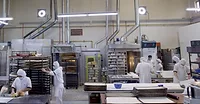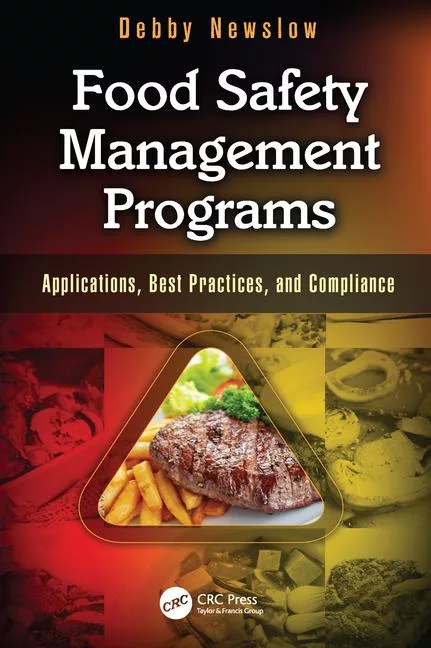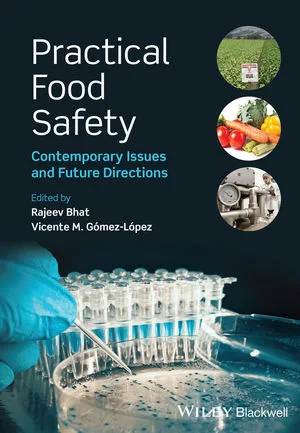Establishing and Implementing a Facility Photography Policy

Image credit: leksandarGeorgiev/E+ via Getty Images
Imagine the following scenario: A quality manager at a food plant is doing some research and finds a URL link with the name of his plant. He clicks on the link and finds a video of the processing operations in his own facility. After viewing the video, several thoughts go through his head, with the first being, "Where the heck did that come from?" The quality manager also realizes that the company would not want this video to be viewable on the internet, as it is a threat to trade secrets also divulges some unflattering information about the company's operating procedures. The manager also thinks, "How did this happen? I thought we had a policy regarding cameras and photography."
This is not an implausible scenario. The author has heard of several processors that have experienced this issue. It is up to each and every food processor, handler, and warehouser to develop, document, and implement a policy regarding photography of their operations. This is a much greater challenge today compared to 20 years ago because nearly every cellphone has a high-quality camera with the ability to capture both pictures and video. Additionally, most people tend to carry their cellphones on their person at all times, which means they are always in possession of a portable camera/video recorder. With this in mind, every thorough photography policy must include a ban on cellphones within the plant. This should be described in a separate policy that specifically addresses cellphones.
Food processing operations that are regulated by the U.S. Food and Drug Administration (FDA) must also factor the agency into their camera policy. Ideally, every processor or handler should have established, documented procedures on how to address a regulatory inspection—a procedure that should start with the receptionist or whomever is responsible for meeting visitors to the facility. The Investigations Operations Manual (IOM) emphasizes that investigators have the right to take photographs:1
Since photographs are one of the most effective and useful forms of evidence, every photo should be taken with a purpose. Photographs should only be taken for evidentiary purpose, e.g., to document violations and environmental surface subsample sites. Photographs should be related to insanitary conditions contributing or likely to contribute filth to finished product, or to practices likely to render it injurious or otherwise violative.1
The IOM lists seven specific conditions or examples of insanitary practices that could be photographed:
- Evidence of rodents or insect infestation and faulty construction or maintenance, which contributes to these conditions
- Routes of, as well as, actual contamination of raw materials or finished products
- Condition of raw materials or finished products
- Employee practices contributing to contamination or to violative conditions
- Manufacturing processes
- Manufacturing and various control records showing errors, substitutions, penciled changes in procedure, faulty practices, deviations from GMPs, NDAs, or other protocols, altered or inadequate assays or other control procedures, and any variation from stated procedure
- Effluent contamination of water systems.1
The IOM also describes two court cases that support FDA's position on its legal right to take photographs. The food industry may not agree with FDA's policy, but industry must abide by it. One point that should be mentioned is that the photography policy may vary between investigators and districts. This situation has created some tension between the industry and FDA.
Now, this is not to say that pictures should never be taken in a warehouse or plant. There are many conditions that might demand a photograph or two. Examples would be the delivery of a damaged or contaminated load, or a photograph of a rail car or truck to verify that it was properly loaded and that dunnage is properly located. With these kind of situations, it is the responsibility of management to give a one-time approval to document the situation.
An example of how a photography policy for a food processing facility might read is offered below.
Photography Policy
- This processor and warehouse does not permit photography on the plant grounds or within the facility by any visitors including guests, auditors, regulators, and suppliers.
- No cameras, or cellphones outfitted with a camera or video capabilities, are allowed in the plant or warehouse.
- Pictures may be taken in the facility with written permission from top management.
Photography Policy for an FDA Investigation:
- The only exception to the Photography Policy outlined above shall be an FDA inspector who presents a warrant explicitly authorizing the taking of pictures. If the inspector has no such warrant, politely inform the inspector that the camera must be left in the office and may not be taken into the plant or warehouse.
- If the inspector asks for an explanation of refusal to permit the possession or use of a camera during the inspection, inform the inspector that it is a company policy not to permit photography without a valid warrant. Make sure to show the inspector the written Photography Policy.
- If a warrant authorizes picture-taking of the warehouse only, it is not applicable for taking photographs within the processing operations. Photography must be limited to the area and object of the warrant.
- Top management may waive the warrant requirement.
Procedures to Be Followed When Photographs are Taken:
- Advise the inspector to take photographs from an area or areas that are safe so that the inspector will not be injured, nor contaminate the product undergoing processing.
- If background or foreground of the picture includes trade secrets, then the supervisor accompanying the inspector shall inform the inspector to that effect and request that the photograph be held in confidentiality by FDA. The supervisor shall note which photograph is to be held as a trade secret.
- The supervisor must have a camera when accompanying the investigator. If the camera is not digital, ensure that film is installed and the flash is functioning.
- The supervisor shall take a photograph of the inspector taking a photo of an object. Both the inspector and the object shall be in the same scene, if physically possible, so that anyone would be able to appreciate the perspective involved in photographing the object. A second photograph should be made of the object from the same place in which the inspector stood. If the objectionable material is very small, it is good practice to place a ruler or any sanitary, non-hazardous object that could serve as a reference of dimension near the object.
- At the exit meeting, remind the investigator of any photographs taken that the company wishes to be classified as trade secrets.
When a processor decides to develop, document, and implement a photography policy, it is a good idea to review the policy with the company's legal team or even work with the legal team on its development. The legal team may favor a policy that is either more or less conservative than what was outlined above. How the final policy reads may well be dependent on a processor's or handler's past experience with FDA inspections and inspectors.
References
- U.S. Food and Drug Administration. Investigations Operations Manual 2023. "Chapter 5: Establishment Inspections." https://www.fda.gov/media/166533/download?attachment.
Looking for quick answers on food safety topics?
Try Ask FSM, our new smart AI search tool.
Ask FSM →









